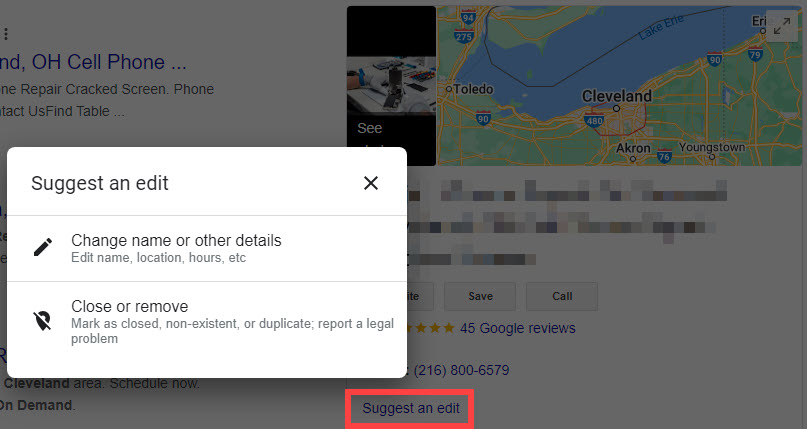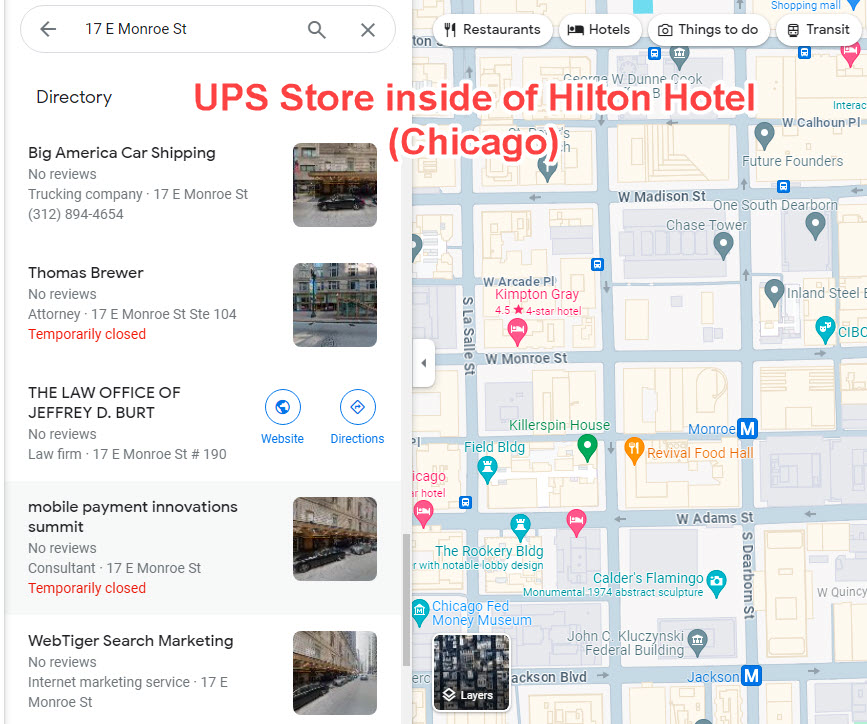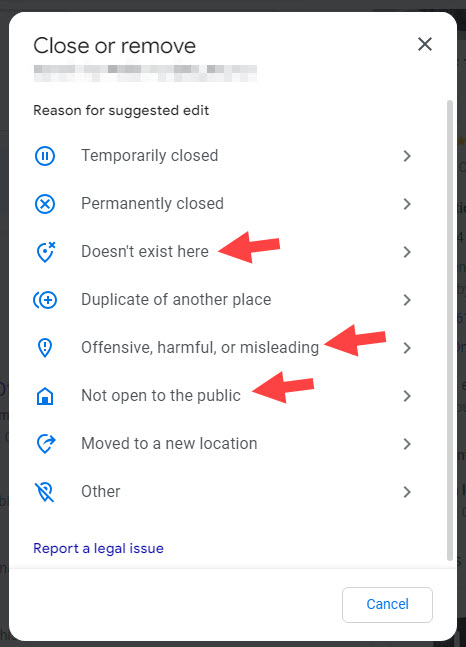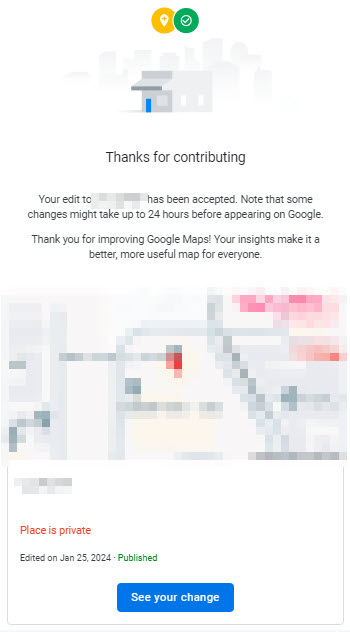
When you use “suggest an edit” to report a business that’s spamming Google Maps, your standard operating procedure might go something like this: you send in only one report per Google Business Profile per violation, and you wait until Google approves or rejects it before you do anything else. That’s not bad SOP, and often it’s good enough.
But impatience can be a virtue – at least if you measure success by how many of your Google Maps anti-spam reports get approved, or by how quickly they’re approved. Some forms of repetition Google ignores. Other kinds of repetition seem to make Google’s ears perk up.

Google Maps spam-mitigation is one small part of the work I do for clients, but it’s an important part (as I’ve described many times). In my efforts to thin the herd, I’ve noticed two things that seem to happen more frequently than they used to:
1. I’ll report a problem (typically a bogus GBP page or address), and after the edit has been pending for a few days or a couple of weeks, I’ll re-report the same issue and sometimes it will be approved the second time around. Same business, same edit, same person reporting it.
2. I’ll report a GBP page that should not exist, and if the edit has been rejected or hasn’t been approved quickly (within a few hours or maybe a couple of days), I’ll do a second report, but this time provide a different reason for requesting removal. In many cases, your second edit may prompt Google to approve the first edit, or Google may just approve the second edit. 6 of one, half a dozen of the other.
What’s surprising to me is not that Google accepts, rejects, or delays acting on an edit, but rather how easily you can get Google to reconsider. Not always, but often, you can turn a no or a maybe into a yes. (Of course, I’m assuming you have a solid basis to propose the edit you’re proposing).
In my experience, having other people report a Google Maps party foul can increase the likelihood of an approval, and the same is true of filling out the redressal form. Either or both of those steps should be part of your anti-spam routine if competitors’ Maps spam is a big problem in your market. So I suggest you also add a second pass to your routine (more on that in a minute).
You and I would agree that all of this is a hassle. It’s a shame you need to spend any time on this stuff in the first place, let alone that you may need to take second passes at competitors’ spam. The hard reality is that Google crowdsources its quality-control. If you don’t report a problem on someone’s GBP page, Google is unlikely to know about it, or even to consider it a problem. The corollary is that if you report a problem, rather than 3 distinct problems, Google will assume there’s only one problem and that everything else checks out. Only the problem you report seems to get noticed. I think that’s part of what is going on here. It’s a very literal reaction on Google’s part, kind of like if you ask someone “Can you tell me what time it is?” and that person replies “Yes.”
So what do I suggest you do? In addition to patrolling Maps in the way I suggest, consider 3 new SOPs:
1. Do a “suggest an edit” on each distinct problem you see on a competitor’s GBP page. If it’s an extraneous GBP page, report it as “Offensive, harmful, or misleading.” If that page also uses a home address, report it as “Not open to the public.” If the name has stuffed-in keywords, submit whatever the real name of the business is. Google won’t ignore the one edit just because you sent in others. On the contrary, Google is more likely to agree with you on something if you’ve told it about every problem you see.

2. When you’re reporting a GBP page that Google should remove, try proposing different reasons for removal. If “Offensive, harmful, or misleading” didn’t dislodge a fake-address page, try “Not open to the public” or whatever other problem is roughly applicable.

3. Try again, or try something else, if the edit is “pending” for a long time. In other words, don’t mistake a pending edit for a rejection. If you reported a problem a month ago, and you know you’re in the right, try it again. If possible, have someone else follow suit. There is a solid chance it will work.

Will those additional steps work every time? No. Not even close. But they might spur Google to do the proper thing 20% of the time rather than 10% of the time. Sometimes the difference between lying in the mud and getting found by customers in the Google Maps 3-pack is one lousy competitor who’s outranking you just because of skulduggery. You may be able to pick off that one competitor, to start with.


